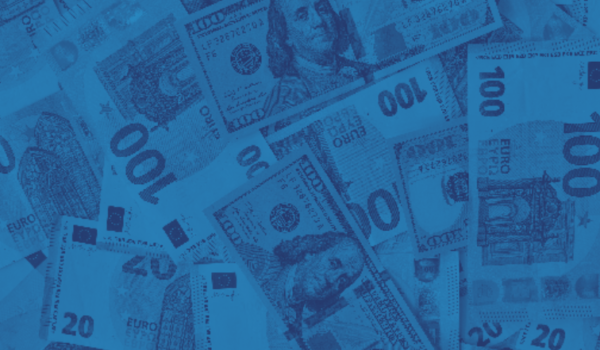
Written by Manuel Torres Lajo
The economic sanctions the European Union (EU) and other allied countries have imposed on Russia as a result of the invasion of Ukraine are unprecedented in modern history. While expected after those imposed in the aftermath of Crimea’s annexation by Moscow, these are broader and stronger, targeting banks (with the exclusion from SWIFT), transport (closed European airspace) and even freezing Russian Central Bank’s assets, as well as the oligarchs and members from Putin’s regime (The Economist, 2022).
These measures are designed to exercise economic pressure on Russia. And while it remains to be seen whether they effectively deter Putin’s regime from going further in Ukraine, Russian consumers are already feeling the effect of sanctions: there is little to no cash available at most ATMs in Russia (Der Spiegel, 2022), Aeroflot is halting all their international flights (Aeroflot, 2022), major European retailers and consumer goods companies (like IKEA, Inditex, H&M, Adidas) have either suspended or terminated their business operations in Russia (Clinton & Butler, 2022) and the Rouble is at an all-time low compared to the Euro (Reuters, 2022), just to name a few examples.
However, EU consumers will also feel some effects, since these sanctions act as a double-edged sword and do have immediate repercussions on the economies of both EU member states and for the continent as a whole. Of particular concern is the energy sector, as Europe still depends on Russia for the supply of natural gas: as of 2021, around 40% of the gas the EU consumes comes from the Eurasian country (McWilliams et al., 2022). But also the food sector is under more stress, given that both Russia and Ukraine are major exporters of cereals (wheat) and grains, which are staple products for both human and animal (i.e., cattle) consumption (Molina, 2022). In this scenario, the sanctions, albeit necessary according to EU senior leaders, are a potential threat to the post-pandemic economic recovery and are likely to aggravate the inflation problem in the EU, therefore requiring some sort of measures to mitigate its effects.
Energy drives up inflation
After two years of pandemic-related restrictions, most EU economies were experiencing clear signs of economic recovery, with a projected growth in 2022 of 3.9% for the Euro Area (IMF, 2022). But at the same time, they were dealing with high levels of inflation, particularly driven by record-high energy prices, namely natural gas, which impacts on those of electricity: as of March 7th, most western European countries had prices close to 450 euros per MWh (Fariza, 2022).
The steady steep increase in energy prices in Europe is not a direct consequence of these new sanctions, but an aggravating factor. The origin of the problem dates back to mid-2021, when economies were reopening after enduring the critical phases of the COVID-19-related restrictions, which caused a major worldwide demand increase for energy, compared to the little demand of 2020. Added to the container crisis that drove shipping costs up (Heilweil, 2021), the results are high inflation levels around the world, including in EU countries. According to Eurostat (2022c), the EU (as a whole) had an average inflation level of 5.6% in January 2022, with countries like Spain (7.5%) and Italy (6.2%) above the mean, and Germany slightly below it (5.5%). These levels were not seen since the 1970s and 1980s.
As previously stated, the natural gas and oil dependency of Europe has meant that the sanctions imposed on Russia by the EU were carefully tailored to avoid hitting too hard the energy sector. Countries such as Germany, Austria, Italy, and most of the EU’s eastern bloc are heavily reliant on Russian gas imports, ranging from 94% of imports for Finland to 46% for Italy (McWilliams, 2022; Buchholz, 2022). Despite this intentional move, international oil and gas prices were going up as sanctions by the EU and/or allied countries targeting this sector were expected. The announcements made in the first days of March 2022 by the United States government banning effect immediately all the imports of Russian oil, together with the UK stating they will phase out all Russian oil imports, the threat from Russia to stop gas exports to Europe through the Nord Stream 1 pipeline and the timeline presented by the EU to cut Russian gas imports by 66% by the end of 2023 sent prices even higher, almost reaching the historic highs of 2008 (Bloomberg News, 2022; Khan, 2022; Liboreiro & Pitchers, 2022).
What it is now at never-seen-before levels as a direct result is the price of fuel per litre in gas stations across Europe. For instance, while in Spain the price is about to reach 2€, in Germany and Italy it has already surpassed that threshold, with Finland’s price close to 2.5€ (European Commission, 2022). In Eastern European countries like Poland and Slovakia, where prices have been regularly lower than in Western countries, the prices are also steadily rising, reaching around 1.5€ (European Commission, 2022). Given that energy is fundamental for almost all economic sectors, it is likely that they will all feel the consequences of its high prices, with increases eventually being transferred to final consumers. This is an additional stress for them after being heavily affected as a result of the pandemic. The case is particularly serious for key sectors such as food, where prices have also been rising steadily.
Cereals push food prices and inflation even higher
Ukraine and Russia are in the top 6 cereal exporters to the EU: between July and November 2021, they accounted for 31% of all cereals’ imports (Eurostat, 2022b) and for at least 22% of all oilseeds’ imports (Eurostat, 2022a). If two of the main exporters of staple products such as cereals and oilseeds are not producing or exporting due to war, then that is a recipe for even higher inflation, adding up to the soaring prices of oil and gas.
This is what is currently happening. International prices of these commodities have increased amid fears of shorter supply and stockpiling. As of March 4th, 2022, wheat prices were up more than 50% (Terazono & Pooler, 2022), visibly impacting the prices of other cereals and seeds as well. The tendency is likely to continue on the rise, given the difficulty of finding alternative suppliers in the short term and the closure of trade routes, particularly by sea.
The EU as a bloc is a net exporter of cereals (Eurostat, 2022b), with Romania, France and Germany leading the way, and a net importer of oilseeds (Eurostat, 2022c). In spite of the former, there are some major EU economies that are net importers of cereals, such as Italy, Spain and the Netherlands (Eurostat, 2022b), making them more vulnerable to the international price fluctuations and supply shortages due to the war in Ukraine. For instance, almost a quarter of the total EU imports of vegetable oil is from Ukraine, with the Netherlands, Spain and Italy responsible for almost three quarters of them. This explains why since March 4th, 2022, some major supermarkets in Spain have begun to limit their sales of sunflower oil to avoid supply problems (Gutiérrez, 2022). And while Italy does not rely heavily on Russia and Ukraine for importing durum wheat (the type used for pasta) and common wheat (the type used for flour), the rise of international prices is likely to affect those of pasta and other related staple goods (Eurostat, 2022b; Sgambato, 2022), as a result of the general scarcity of supply in international markets.
Cereals are also imported for livestock feeding, another area in which the situation is worrisome. Italy imports from Ukraine around 53% of the maize needed for animal feed, with Spain importing around 40% of its total for both human and animal consumption (Eurostat, 2022b; Molina, 2022; Sgambato, 2022). Higher production costs of meat and its derivates, including dairy, will certainly translate into higher final prices. And thus, inflation levels also increase.
The phantom of stagflation in the short-term, but long-term opportunities
After two years of pandemic restrictions that put the European economy under stress, it seemed like the epidemiological situation finally allowed for a full reopening of the European economy, as well as for the European Central Bank (ECB) to put measures into place to stabilise inflation. However, the Russian invasion of Ukraine and the subsequent imposition of sanctions has altered even further an already complicated economic scenario. EU leaders, such as Paolo Gentiloni, the EU’s Commissioner for Economy, have highlighted the importance of sanctions in the quest to save democracy, defending the EU’s decision and stating how the bloc is ready to bear the costs of these necessary measures (Thomas & Strupczewski, 2022).
But the costs for EU consumers could be even higher than what can be currently expected. Should no further measures be put into place to limit the increase of prices, it is possible for stagflation to appear. This is an unusual economic situation that appears when an economy has high inflation with little economic growth or no growth at all. Consequences of stagflation, as seen during the oil crisis in the 1970s, are mostly uncharted territory and could prove serious to an economy already weakened by pandemic restrictions. Therefore, the EU must take action in the short term to protect the economy and with that, its citizens from the rising costs. Actions could include tax deductions in the energy sector, as well as setting a price limit for electricity, which is sought by different EU members including Spain, Italy and Belgium (Fleming & Mallet, 2022). The European Commission has announced that a proposal to decouple gas and electricity prices will be presented by the end of the month (Fleming & Mallet, 2022). In terms of food suppliers, the request from some states, such as Spain (Maté, 2022), should be considered to swiftly allow food imports from alternative suppliers. Increasing the scope of countries that can supply Europe might help to reduce incertitude and pave the way for long-term opportunities to reduce dependency on Russia.
The latter is likely unachievable in the short term, but if serious steps are taken, this current situation can create the right conditions for medium to long term independence. The recent announcement by the EU to cut two thirds of their Russian imports of gas is a step in this direction. But it would require new suppliers and/or new technological developments to substitute the Russian imports. In this line, Germany has announced its intention to build an LNG (Liquified Natural Gas) terminal on its northern coast, allowing imports from suppliers from greater distances, including the USA and Qatar (Wrede, 2022). Italy and Spain already import gas from Algeria and are likely to increase imports (Campbell, 2022; Juliana, 2022), but the construction of either LNG plants and pipelines to connect the rest of Europe with Italy and Spain’s imports of Algerian gas are, in the best-case scenario, medium term solutions.
Looking at medium to long-term solutions, the current situation creates a case for faster development of green energy sources, including solar and wind as suggested by the International Energy Association (2022). This not only reduces exposure to international suppliers and price fluctuations, as more energy can be produced within the EU at lower costs, but could also boost the efforts toward achieving ambitious climate targets.
In the wake of the uncertainty on how long the Russian invasion of Ukraine will last, and whether more stringent sanctions will be enforced, it is clear that EU consumers must be protected. Failure to do so can create more discontent among consumers, impact negatively on growth, reduce support for the measures taken to protect Europe and might be used by populist candidates in their attempts to reach office in countries hosting elections in 2022. While the short term forecast might not look the brightest, the long-term, if done properly, has great potential, with energy security within Europe achieved using greener energy sources, protecting consumers, the economy and the environment.
References
Aeroflot. (2022, March). Information about flight cancellations and changes. Retrieved from: https://www.aeroflot.ru/de-en/cancellations?from=en_new_main
Bloomberg News. (2022, March 7). Rusia amenaza con cortar flujo de gas a Europa vía Nord Stream 1. Retrieved from: https://www.bloomberglinea.com/2022/03/08/rusia-amenaza-con-cortar-flujo-de-gas-a-europa-via-nord-stream-1/
Buchholz, K. (2022, January 28). Which European Countries Depend On Russian Gas? [Infographic]. Forbes. Retrieved from: https://www.forbes.com/sites/katharinabuchholz/2022/01/28/which-european-countries-depend-on-russian-gas-infographic/?sh=ec4ed767d2aa
Campbell, M. (2022, March 11). What are Europe’s energy alternatives now that Russian gas is off the cards? Euronews. Retrieved from: https://www.euronews.com/green/2022/03/11/europe-scrambles-to-keep-the-lights-on-as-it-sidelines-russian-gas
Clinton, J., & Butler, S. (2022, March 3). Ikea closes all stores and factories in Russia amid exodus of western firms. The Guardian. Retrieved from: https://www.theguardian.com/business/2022/mar/03/ikea-closes-all-stores-and-factories-in-russia-amid-exodus-of-western-firms
Der Spiegel. (2022, February 28). Ukraine-Krieg: Auch in Russland spüren die Menschen die Folgen des Kriegs. Retrieved from: https://www.spiegel.de/ausland/ukraine-krieg-auch-in-russland-spueren-die-menschen-die-folgen-des-kriegs-a-6627746b-fd27-4fe4-bd40-ace949a79bd8
European Commission. (2022, February 28). Weekly Oil Bulletin. Retrieved from: https://energy.ec.europa.eu/data-and-analysis/weekly-oil-bulletin_en
Eurostat. (2022a). EU Cereals Trade 2021/22 Marketing Year July-November. European Commission.
Eurostat. (2022b). EU Oilseeds and protein crops 2021/22 Marketing Year July-November. European Commission.
Eurostat. (2022c, March 2). HICP – monthly data (annual rate of change). Retrieved from: https://ec.europa.eu/eurostat/databrowser/view/prc_hicp_manr/default/table?lang=en
Fariza, I. (2022, March 6). El mercado eléctrico rompe todos los récords y eleva la presión para que Bruselas desligue su precio del gas. El País. Retrieved from: https://elpais.com/economia/2022-03-06/el-precio-de-la-electricidad-en-espana-pulveriza-su-maximo-historico-442-euros-el-megavatio.html
Fleming, S., & Mallet, V. (2022, March 11). EU vows emergency plans to tackle energy costs after Ukraine invasion. Financial Times. Retrieved from: https://www.ft.com/content/87dcb43c-82f8-432d-8ab3-cc64b0afd863
Grzegorczyk, M., Poitiers, N., Weil, P., & Wolff, G. (2022, February 11). The risks for Russia and Europe: how new sanctions could hit economic ties. Bruehel. Retrieved from: https://www.bruegel.org/2022/02/the-risks-for-russia-and-europe-how-new-sanctions-could-hit-economic-ties/
Gutiérrez, H. (2022, March 4). Mercadona, Makro, Consum y otros supermercados comienzan a racionar la venta de aceite de girasol por el conflicto en Ucrania. El País. Retrieved from: https://elpais.com/economia/2022-03-04/mercadona-makro-consum-y-otros-supermercados-comienzan-a-racionar-la-venta-de-aceite-de-girasol-por-el-conflicto-en-ucrania.html
International Monetary Fund. (2022, January). World Economic Outlook Update, January 2022: Rising Caseloads, A Disrupted Recovery, and Higher Inflation. IMF World Economic Outlook. Retrieved from: https://www.imf.org/en/Publications/WEO/Issues/2022/01/25/world-economic-outlook-update-january-2022
Juliana, E. (2022, March 2). Argelia, España e Italia. La Vanguardia. Retrieved from: https://www.lavanguardia.com/politica/20220302/8092638/argelia-espana-italia.html
Khan, S. (2022, March 9). Oil surges as U.S. bans Russian crude, Britain to phase out purchases. Reuters. Retrieved from: https://www.reuters.com/business/oil-see-saws-near-14-yr-highs-us-weighs-russia-oil-embargo-2022-03-08/
Liboreiro, J., & Pitchers, C. (2022, March 8). EU will slash imports of Russian gas by two thirds by 2023. Euronews. Retrieved from: https://www.euronews.com/my-europe/2022/03/08/eu-will-slash-imports-of-russian-gas-by-two-thirds-by-2023
Maté, V. (2022, March 4). Guerra en Ucrania: España pide a Bruselas medidas excepcionales para garantizar el suministro de piensos. El País Retrieved from: https://elpais.com/economia/2022-03-04/espana-pide-a-bruselas-medidas-excepcionales-para-garantizar-el-suministro-de-piensos.html
McWilliams, B., Sgaravatti, G., Tagliapietra, S., & Zachmann, G. (2022, January 27). Can Europe survive painlessly without Russian gas? Bruegel. Retrieved from: https://www.bruegel.org/2022/01/can-europe-survive-painlessly-without-russian-gas/
Molina, C. (2022, March 5). El cierre del ‘granero’ de España anticipa una subida de precios en alimentos. El País. Retrieved from: https://cincodias.elpais.com/cincodias/2022/03/03/companias/1646318873_517464.html?utm_source=Facebook&ssm=FB_CM&fbclid=IwAR2wfscSMlwV9jjUj5tFw09x6nQBscrpdfGl5fOmEkKGkCjKW5l1NojRkY4#Echobox=1646493174
Reuters. (2022, March 4). Rouble down over 20% for week in Moscow as sanctions bite; drops 32% in offshore trade. Retrieved from: https://www.reuters.com/markets/europe/rouble-mixed-near-record-lows-volatile-moscow-trade-2022-03-04/
Sgambato, E. (2022, February 24). La guerra in Ucraina fa balzare i prezzi di grano e mais: l’allarme del settore agroalimentare. Il Sole 24 Ore. Retrieved from: https://www.ilsole24ore.com/art/la-guerra-ucraina-fa-balzare-prezzi-grano-e-mais-l-allarme-settore-agroalimentare-AELt9uFB
Terazono, E., & Pooler, M. (2022, March 4). Wheat prices hit record highs as war halts exports from Ukraine and Russia. Financial Times. Retrieved from: https://www.ft.com/content/e6a28dd9-ecea-4d67-b6b5-a50301b731b2
The Economist. (2022, March). Western sanctions on Russia are like none the world has seen. Retrieved from: https://www.economist.com/briefing/2022/03/05/western-sanctions-on-russia-are-like-none-the-world-has-seen
Thomas, L., & Strupczewski, J. (2022, February 25). EU ready to take economic pain of imposing sanctions on Russia. Reuters. Retrieved from: https://www.reuters.com/article/ukraine-crisis-eu-impact-idCNL1N2V00NS
Wrede, I. (2022, March 3). Does Germany really need LNG terminals? Deutsche Welle. Retrieved from: https://www.dw.com/en/does-germany-really-need-lng-terminals/a-61005220

 Domestic abuse in England & Wales: a historical legal gap bridged by Section 76 of the Serious Crime Act 2015?
Domestic abuse in England & Wales: a historical legal gap bridged by Section 76 of the Serious Crime Act 2015?  Looking back at Burden and Burden v. the UK: Are siblings being legally overlooked?
Looking back at Burden and Burden v. the UK: Are siblings being legally overlooked?  The European Housing Crisis from the Human Rights Perspective
The European Housing Crisis from the Human Rights Perspective  Female Suicide Bombers As A Security Threat: Towards A More Comprehensive And Inclusive Approach
Female Suicide Bombers As A Security Threat: Towards A More Comprehensive And Inclusive Approach 


